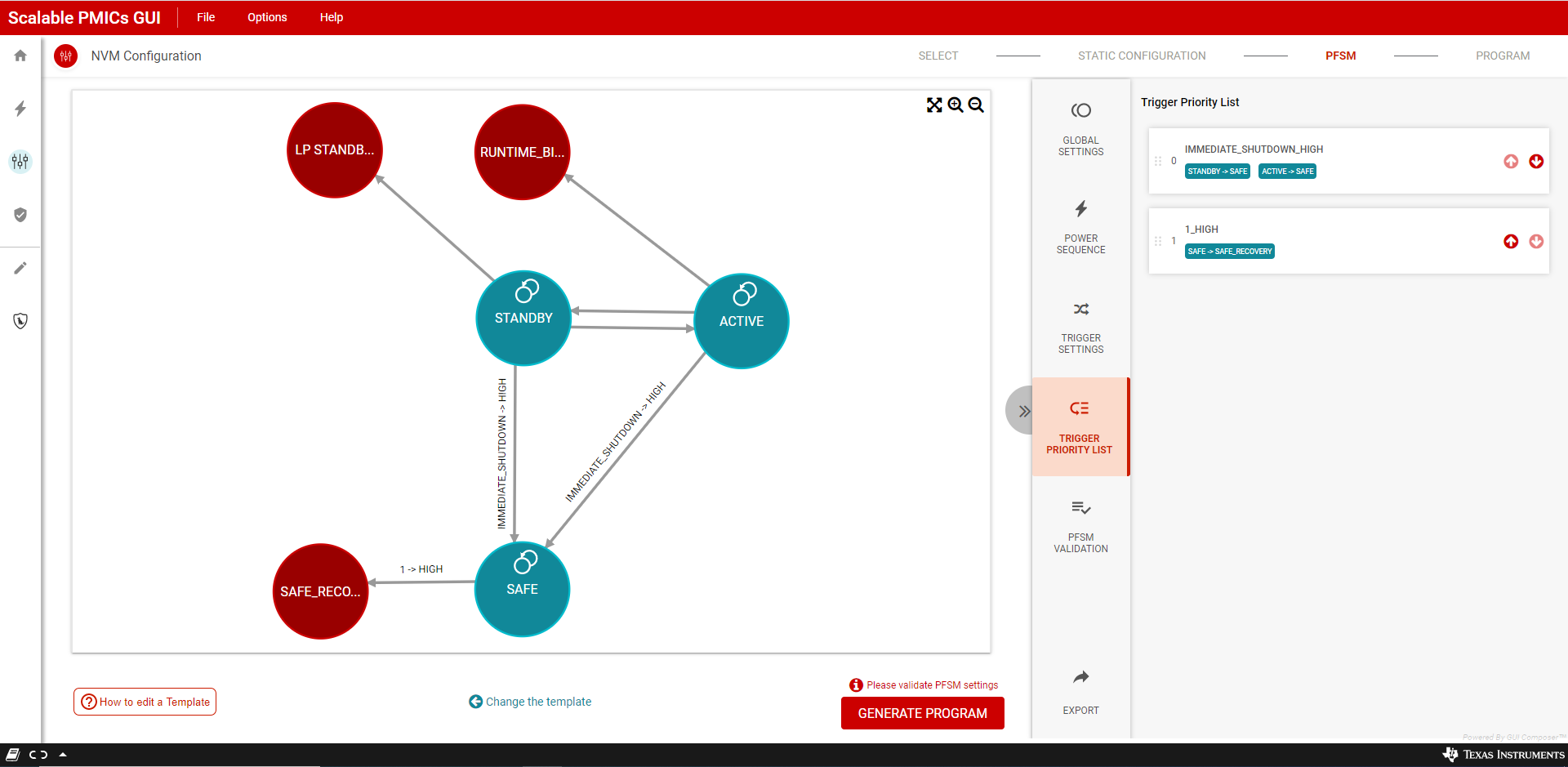SLVUBT8B November 2020 – June 2022 LP8764-Q1 , TPS6594-Q1
- Scalable PMIC's GUI User’s Guide
- Trademarks
- 1 Introduction
- 2 Supported Features
- 3 Revisions
- 4 Overview
- 5 Getting Started
- 6 Quick-start Page
- 7 Register Map Page
- 8 NVM Configuration Page
- 9 NVM Validation Page
- 10Watchdog Page
- 11Additional Resources
- 12Appendix A: Troubleshooting
- 13Appendix B: Advanced Topics
- 14Appendix C: Known Limitations
- 15Appendix D: Migration Topics
- 16Revision History
8.1.2.5 Trigger Priority List
Triggers are initially prioritized based upon the TRIG_SEL value for each trigger as defined in the data sheet. Lower values have higher priority. It is important to confirm that the priority within the TRIGGER PRIORITY LIST matches the desired priority of the application. Figure 8-28 shows the priority list from the simple example in the previous section. Click the arrows within the list to move triggers up and down in priority.
 Figure 8-28 Trigger Priority List
Figure 8-28 Trigger Priority List